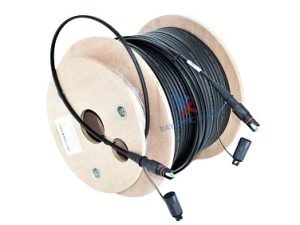In today’s rapidly advancing digital age, reliable and high-speed communication networks are essential for both personal and professional activities. Fiber optic technology has emerged as a cornerstone of modern telecommunications infrastructure due to its unparalleled data transmission capabilities. Within the realm of fiber optic networks, connectorized fiber optic cables play a crucial role in facilitating seamless connectivity and efficient data transfer.
Connectorized fiber optic cables are meticulously engineered to provide reliable and high-performance connections between various network components, such as switches, routers, servers, and end-user devices. Unlike traditional copper-based cables, fiber optic cables utilize light pulses to transmit data, enabling them to deliver unparalleled bandwidth and data transfer speeds over long distances without signal degradation.
The term “connectorized” refers to the presence of connectors, or terminations, at both ends of the fiber optic cable. These connectors are meticulously crafted to ensure precise alignment of fiber cores, minimizing signal loss and maximizing data transmission efficiency. Common types of fiber optic connectors include SC (Subscriber Connector), LC (Lucent Connector), ST (Straight Tip), and MTP/MPO (Multiple-Fiber Push-On/Pull-Off), each offering unique advantages in terms of performance, size, and compatibility.

One of the key advantages of connectorized fiber optic cables is their versatility and ease of installation. The presence of pre-attached connectors eliminates the need for time-consuming and error-prone termination processes, reducing installation time and minimizing the risk of signal loss due to improper connections. This plug-and-play functionality makes connectorized fiber optic cables ideal for deployment in diverse environments, ranging from data centers and telecommunications facilities to office buildings and residential homes.
Furthermore, connectorized fiber optic cables are available in a wide range of configurations to suit various application requirements. Single-mode cables are designed for long-distance transmissions and are ideal for telecommunications backbone networks, while multi-mode cables are optimized for shorter distances and are commonly used in local area networks (LANs) and enterprise environments. Additionally, armored and outdoor-rated variants are available to withstand harsh environmental conditions, making them suitable for outdoor deployments and industrial applications.
In conclusion, connectorized fiber optic cables are indispensable components of modern communication networks, offering unparalleled performance, reliability, and versatility. By harnessing the power of fiber optics and precision-engineered connectors, these cables enable seamless connectivity and high-speed data transmission across a wide range of applications. Whether deployed in data centers, office buildings, or residential settings, connectorized fiber optic cables play a vital role in driving the digital transformation and empowering the connected world of tomorrow.

